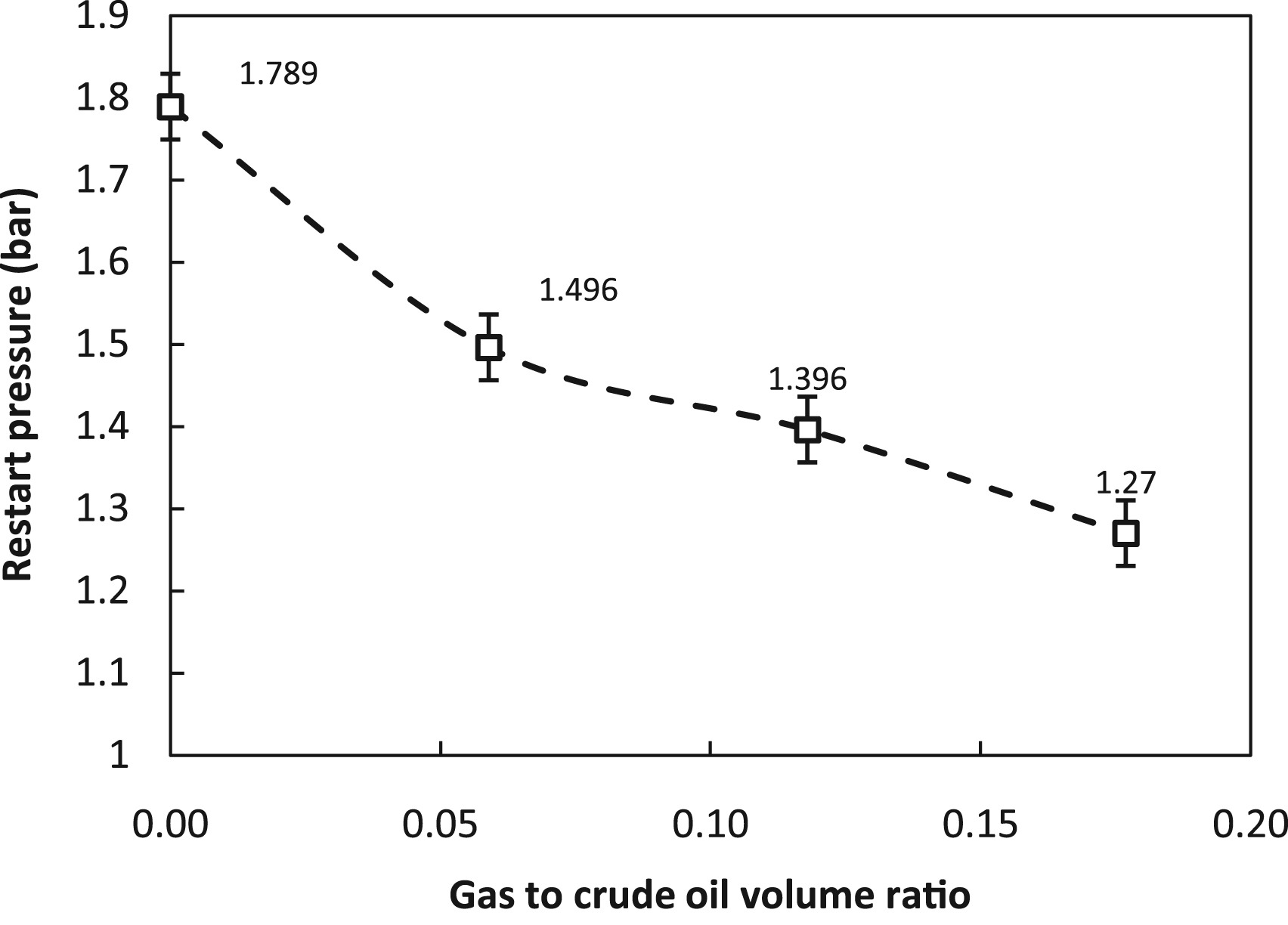Injection of non-reacting gas into production pipelines to ease restart pumping of waxy crude oil
Author: Shaharin Anwar Sulaiman - April 2017
Abstract
Wax deposition in production pipelines causes flow assurance issue due to reduction in flow rate. Gelling of waxy crude oil after subsequent cooling restricts the flow and causes blockage in pipelines, and thus requiring large and costly pumps to restart and regain the steady flow. Nevertheless, the formation of intra-gel voids in the gel was recently reported to ease restart pumping. Further, it is believed that injecting non-reacting gas into the production lines prior to or during shut down could alleviate the restart flow problem and save costs. An experimental work was conducted in order to manipulate the effectiveness of such approach. A flow loop rig was used to simulate the conditions of waxy crude oil in pipelines on seabed and a gas injection system was used to inject nitrogen into the system after crude oil stopped flowing, prior to gelation process. Restart pressure was applied in two modes: instantaneous and gradual pumping. It was observed that maximum restart pressure reductions of 11.48% and 17.44% were achieved when pressure was applied instantaneously and gradually, respectively. It was found that the restart pressure decreased as the gas to oil volume ratio increased due to high slippage effect. In addition, restart pressure under gradual restart approach was observed to be higher than that for instantaneous restart approach.
Methodology
Fig. 1 shows a schematic diagram of the waxy crude oil flow loop rig used in this work. The waxy crude oil was stored inside a storage tank, which was heated to above the wax appearance temperature to liquefy waxes in the gelled crude oil. A stirrer motor placed on top of the storage tank was used to ensure a homogenous heating and removal of past thermal behavior. The system contained an acrylic test section pipe of 1.2 m in length and 0.03 m in diameter, which was placed in a water bath. The pipings within the systems were rolled with trace heaters all the way except for the test section pipe within the water bath. Both the trace heaters along the pipelines and heater within the storage tank were switched on at the same time. Pipelines upstream and downstream of the test section were heated to 80°C to liquefy any remaining gelled waxes within the piping and remove shear and thermal histories. Once the storage tank and piping system were heated up, a gear pump was switched on in order to build enough pressure to disintegrate the gelled crude oil in the acrylic test section. Table 1 shows specification of the gear pump. After the test section had resumed flowing condition, crude oil then returned back to the crude oil storage located upstream of the test section.
Impact & Benefits
Reduced viscosity: Waxy crude oil tends to have high viscosity, making it difficult to flow through pipelines, especially after shutdowns. Injecting non-reacting gas, such as nitrogen or natural gas, can help reduce the viscosity of the crude oil by acting as a diluent. This makes it easier to restart pumping operations and maintain steady flow rates.
Prevention of Wax Deposition: Waxy crude oil contains paraffin wax, which can solidify and deposit on pipeline walls, leading to flow restrictions and operational challenges. Injecting non-reacting gas helps prevent wax deposition by keeping the crude oil in a more fluid state and preventing the wax from solidifying.
Improved Pipeline Integrity: Restarting pumping operations in pipelines containing waxy crude oil can exert high pressures and stresses on the pipeline infrastructure, potentially leading to mechanical damage or integrity issues. Injecting non-reacting gas can help alleviate these pressures by reducing the resistance to flow, thereby preserving the integrity of the pipeline system.
Enhanced Operational Flexibility: By facilitating the restart of pumping operations and reducing the risk of wax deposition, injecting non-reacting gas provides operators with greater flexibility in managing production schedules and responding to changes in demand. This can lead to improved overall efficiency and productivity in oil production operations.
Market Potential
Growing Production of Waxy Crude Oil: As conventional oil reserves decline, there is an increasing reliance on unconventional sources of crude oil, many of which contain higher levels of wax. This trend is particularly evident in regions like Canada's oil sands and parts of South America, where waxy crude oil production is significant.
Pipeline Infrastructure Expansion: With the development of new oil fields and the need to transport crude oil over longer distances, there is a continuous expansion of pipeline infrastructure globally. As a result, there is a growing market for technologies and solutions that optimize the flow of waxy crude oil through these pipelines, including the injection of non-reacting gas.
Operational Efficiency and Cost Savings: Oil producers are constantly seeking ways to improve operational efficiency and reduce costs. Injecting non-reacting gas into production pipelines offers a cost-effective solution for easing the restart pumping of waxy crude oil, minimizing downtime, and avoiding costly interventions such as mechanical pigging or chemical treatments.
Regulatory Considerations: Regulatory requirements aimed at reducing environmental impacts and improving safety in oil production and transportation operations can drive the adoption of technologies that mitigate risks associated with waxy crude oil transportation. Injecting non-reacting gas to prevent wax deposition and maintain pipeline integrity aligns with these regulatory objectives.



